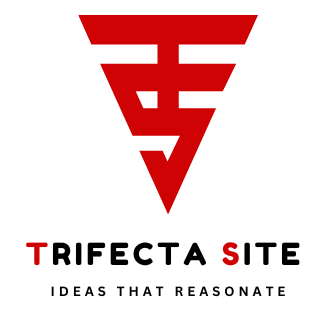The Spelingbee NYT Nov 14 refers to the specific edition of The New York Times Spelling Bee game released on November 14. This daily word puzzle challenges players to form as many words as possible using a set of seven letters, with one mandatory center letter. Known for its simplicity and addictive nature, the Spelingbee has become a beloved pastime for word game enthusiasts worldwide.
The puzzle often serves as a mental exercise and a way to relax. People from different walks of life enjoy participating, be it during their morning coffee or as a wind-down activity before bed. The Spelingbee has carved a niche for itself among other word games by providing just the right balance of challenge and entertainment.
The Appeal of Word Games
Word games like the Spelingbee offer more than just entertainment. They serve as a powerful tool for improving communication skills, expanding vocabulary, and sharpening cognitive abilities. From solving crosswords to decoding pangrams, these activities ignite a love for words and language, making learning enjoyable.
The Unique Features of the Spelingbee
- Definition and Rules: Players must form words with at least four letters, using the central letter in every word. Words must be valid according to The New York Times dictionary.
- Pangram Challenge: A pangram—a word using all seven letters—is the ultimate goal, offering the highest points.
- Time and Accessibility: Available daily, it’s a time-bound activity but perfect for quick mental engagement.
Word games provide a mix of relaxation and stimulation. The Spelingbee is particularly unique in how it merges both, making it a popular choice for players of all ages. Whether you’re a casual player or a competitive one, the game provides endless satisfaction.
Strategies for Mastering the Spelingbee
Expand Your Vocabulary
A strong vocabulary is the foundation for excelling in the Spelingbee. Regularly reading, learning new words, and understanding their definitions can significantly boost your performance. Engaging with dictionaries or apps focused on language learning can also enhance your word bank, providing a noticeable edge.
Spotting Patterns and Word Families
Identifying common prefixes, suffixes, and root words can help you generate multiple words. For instance, if the letters include “light,” you can form “light,” “lighting,” and “slightly.” Recognizing patterns such as double letters or frequent vowel-consonant combinations can also make a difference.
Practice Speed and Focus
Speed and focus are critical in solving the Spelingbee. Setting a timer or practicing under time constraints can improve your ability to think quickly. Try challenging yourself with mock puzzles to build confidence and agility.
Entities in the World of Word Games
Definition and Communication
Word games rely heavily on understanding definitions and enhancing communication skills. The more familiar you are with word meanings, the better you’ll perform. Enhancing your linguistic intuition helps not only in the Spelingbee but also in other word-centric activities.
Concepts of Force, Speed, and Light
While these might seem unrelated, concepts like force, speed, and light can inspire creative connections in word formation. For instance, “speed” could lead to words like “sped” or “speedy.” Similarly, “light” can inspire words such as “slight,” “lit,” and “highlight.”
Onomatopoeia and Colorful Words
Words that mimic sounds (onomatopoeia) add a fun layer to the Spelingbee. Think of terms like “buzz,” “clap,” or “whoosh.” Additionally, colorful words can evoke vivid imagery, enriching the game experience. Incorporating vibrant language makes the puzzle-solving journey more enjoyable and stimulating.
The Role of The New York Times in Word Games
The New York Times has revolutionized the word game business by combining tradition with innovation. Alongside the Spelling Bee, they offer puzzles like crosswords and mini-games, making them a central force in the world of recreational linguistics.

The Evolution of the Spelingbee
What started as a simple pastime has now become a celebrated sport of the mind. With editions like the Spelingbee NYT Nov 14, The New York Times ensures that players remain engaged and challenged daily. Its consistent updates and user-friendly interface continue to draw in new players, making it a global phenomenon.
Beyond the Spelingbee: Other Word Games
Crosswords
Crosswords are another popular offering from The New York Times. They challenge players to solve clues that test both vocabulary and general knowledge. These puzzles have a timeless appeal and provide an excellent complement to the Spelingbee.
Pangrams
A subset of word games, pangrams challenge players to form sentences or words using every letter of the alphabet at least once. In the Spelingbee, finding a pangram is the ultimate accomplishment. This requires creativity and a broad vocabulary, making it a particularly satisfying feat.
The Science of Word Games
Cognitive Benefits
Playing word games enhances memory, boosts problem-solving skills, and fosters creativity. It’s like a mental gym session that keeps your brain sharp. Researchers have found that engaging in puzzles regularly can delay cognitive decline and improve overall brain health.
Psychological Effects
Engaging in activities like the Spelingbee can reduce stress, improve mood, and provide a sense of accomplishment. The immersive nature of word games offers a mental escape from daily pressures, promoting relaxation and mindfulness.
Tips for Excelling in the Spelingbee NYT Nov 14
- Start with Small Words: Begin by forming smaller words before tackling complex ones. It helps build momentum.
- Seek the Pangram: Focus on finding the pangram for maximum points. It’s a rewarding challenge that pushes your limits.
- Take Breaks: Step away when stuck and return with fresh eyes. This refreshes your perspective and helps discover new words.
- Use All Letters: Experiment with different letter combinations to uncover hidden possibilities.
Future of Word Games
With advancements in technology, the future of word games looks bright. Virtual reality, augmented reality, and AI-driven puzzles are set to revolutionize how we play and engage with words. Imagine solving a 3D crossword or participating in a virtual Spelingbee competition with players from around the globe.
Additionally, the integration of machine learning could personalize puzzles based on individual skill levels, ensuring that every game is both challenging and enjoyable.
Conclusion
The Spelingbee NYT Nov 14 is more than just a game; it’s a celebration of words, creativity, and cognitive prowess. Whether you’re a novice or a seasoned player, this word game offers endless opportunities to learn, grow, and have fun. So, gear up, grab your pen (or keyboard), and dive into the captivating world of the Spelingbee!
Additional Insights: Spelingbee NYT Nov 14
The term “spelingbee nyt nov 14” has gained traction among enthusiasts eager to explore this specific edition of the game. Its popularity underscores the universal appeal of word games and the collective excitement surrounding The New York Times’ daily offerings. Players often look forward to uncovering unique pangrams and improving their skills with each new challenge.
Beyond its gameplay, the Spelingbee fosters a sense of community. Many players share their experiences, strategies, and achievements online, creating a vibrant ecosystem around the game. From casual solvers to competitive enthusiasts, the Spelingbee continues to unite word lovers worldwide.
FAQs About “Spelingbee NYT Nov 14”
Here are SEO-optimized FAQs centered around the keyword “spelingbee nyt nov 14”:
1. What is the “Spelingbee NYT Nov 14” about?
The “Spelingbee NYT Nov 14” likely refers to The New York Times Spelling Bee puzzle published on November 14. It is a daily word game where players form words from a set of seven unique letters.
2. How can I access the Spelingbee NYT puzzle for November 14?
You can find the November 14 Spelling Bee puzzle directly on The New York Times website or through the NYT app under the Games section.
3. What were the letters in the Spelingbee NYT Nov 14 puzzle?
The specific set of letters for the November 14 Spelling Bee puzzle will be displayed on the day it is published. Players are tasked with forming words using these letters while including the central letter in every word.
4. What is the highest score possible in the Spelingbee NYT Nov 14?
The maximum score for the November 14 Spelling Bee puzzle will depend on the words that can be made from the given letters. Players aim to reach the “Genius” rank or find the “pangram.”
5. What is a “pangram” in the Spelingbee NYT Nov 14?
A pangram is a word that uses all seven letters provided in the Spelling Bee puzzle. Finding the pangram earns players a significant score boost.
6. Are there any tips to solve the Spelingbee NYT Nov 14 puzzle?
Yes! Focus on short words first, use prefixes and suffixes, and always ensure the central letter is included in each word. Revisiting the puzzle later in the day may help you spot missed words.
7. Can I play the Spelingbee NYT Nov 14 puzzle for free?
The Spelling Bee puzzle is part of The New York Times Games subscription. Some features may be available for free, but full access typically requires a subscription.
8. Where can I find the answers to the Spelingbee NYT Nov 14?
Answers for the November 14 Spelling Bee puzzle are often shared online by enthusiasts or found in the NYT Games section after the puzzle’s completion.
9. Why is it called “Spelingbee NYT” instead of “Spelling Bee NYT”?
The keyword “Spelingbee” could be a typo or shorthand commonly used by users searching for The New York Times Spelling Bee puzzle.
10. How popular is the Spelingbee NYT Nov 14 puzzle?
The Spelling Bee puzzle has a large following of word game enthusiasts who enjoy daily challenges like the one on November 14. Its popularity grows as more players share their achievements.





